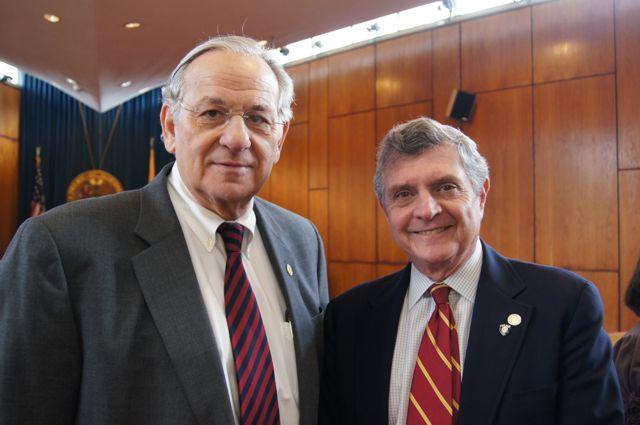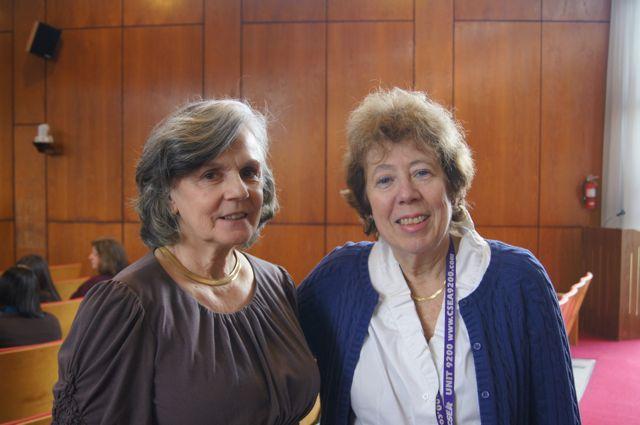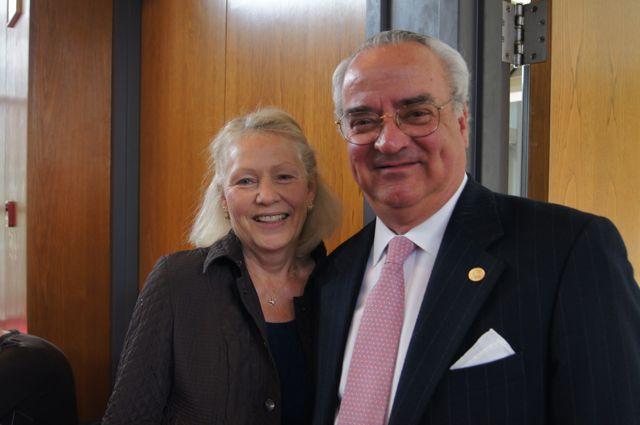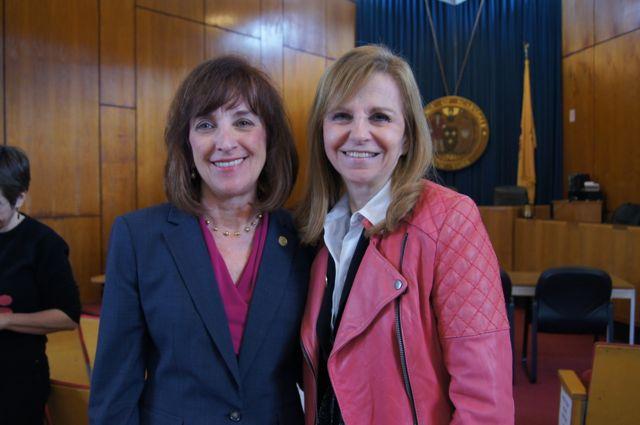Why Become A Girl Scout Leader
- Details
- Written by: Lisa Furgatch
- Hits: 7124
 Leadership skills, community connections, friendships, fun trips, laughter, toasted marshmallows--- and watching your child and her friends turn into capable young adults right before your eyes. If these are some of the things you’ll get out of scouting—think about what your daughter will gain!
Leadership skills, community connections, friendships, fun trips, laughter, toasted marshmallows--- and watching your child and her friends turn into capable young adults right before your eyes. If these are some of the things you’ll get out of scouting—think about what your daughter will gain!
When my good friend, Miriam Beveridge, asked me if I wanted to be a Girl Scout Leader and start a Brownie Troop at Greenacres, the first thing I thought of was the fact that I had been a Brownie “drop-out.”. I grew up in the 60’s and being in Brownies back then seemed very “Betty Crocker-ish” to me--cooking, sewing and not much else. But since Miriam and I really enjoyed spending time together anyway, I thought, hey, why not? We could make our troop more interesting than that.
Our troop loves trips---so over the years we’ve gone rock climbing, snowshoeing, sailing, scuba diving, geocaching, horseback riding, kick boxing and kayaking. We’ve camped in tents and in cabins, in all four seasons. Cooked on an open fire, in an underground pit and in an oven made from a cardboard box and tin foil. We’ve learned about water safety, bird watching, forensics, fashion, film editing, woodworking and fish seining.
As you might imagine, the girls in our troop have become close friends. They are all very distinct personalities and while their “best” friends in the troop may change over time, they are fiercely loyal to one another. Sharing all these life experiences has created a bond between them. They know each other’s foibles and accept them; they know each other’s strengths and depend on them.
Many little girls in our community want to become scouts, but not enough parents are willing to take  on the role of troop leader. For Miriam and myself it’s been a terrific ride that’s not over yet. Looking in from the outside it may seem daunting, but with the many talented people involved with Scarsdale/Edgemont Girl Scouts, if you were even thinking of starting a troop, you would have a lot of help. The leaders meet once a month at the Girl Scout House and are always available to give advice and may even come to each others troop meetings once in a while to help in various ways. Older scout troops will come to work with younger ones--great for both age groups as well as the leaders. And, if you need to slow things down and meet less frequently, it is perfectly fine. Your troop is what you make of it.
on the role of troop leader. For Miriam and myself it’s been a terrific ride that’s not over yet. Looking in from the outside it may seem daunting, but with the many talented people involved with Scarsdale/Edgemont Girl Scouts, if you were even thinking of starting a troop, you would have a lot of help. The leaders meet once a month at the Girl Scout House and are always available to give advice and may even come to each others troop meetings once in a while to help in various ways. Older scout troops will come to work with younger ones--great for both age groups as well as the leaders. And, if you need to slow things down and meet less frequently, it is perfectly fine. Your troop is what you make of it.
We asked a couple of girls from other Scarsdale troops, who are now grown, to tell you why they liked scouting. Samantha Ellis, age 23 and working for Marriott International said “Girl Scouting was one of my favorite activities. I started in kindergarten as a Daisy and continued through 12th grade. My mother was a leader, so we went on many trips with all my scout friends. I loved camping, building fires, running leadership activities, and bonding with my Girl Scout sisters. When I earned my Gold Award, I learned that one person can really make a difference; it allowed me to help other people but it also helped me. I learned that community service and volunteering make you feel good. Girl Scouts taught me how to be organized so I could lead activities. I became an effective communicator, which has served me to this day. From camps to badges to community involvement--Girl Scouts turned me from a shy girl into a confident woman.”
Mary Crawford, age 21 and studying for her Masters at University of Edinburgh, told us, “I loved getting together with my fellow Girl Scouts---just hanging out, talking, laughing and helping each other. I also enjoyed all the fun outdoor activities like camping, orienteering and hiking - hobbies I continue to enjoy. Girl Scouting taught me to be organized, self confident, to work with others and yet make my own decisions and stand on my own. As a scout, my mom made me call our relatives to sell cookies, I didn't like it but it taught me to handle a telephone conversation. Several years ago I interned in Congressman Crowley's office, where one of my responsibilities was to answer the telephone and talk with constituents, another life skill I leaned from Girl Scouting! I was also an intern one summer at the GSUSA National Headquarters working in the archives with old documents. This experience helped me secure my current internship with the National Library of Scotland.”
Jordana Cooper, age 17 and currently a senior at Scarsdale High School, has been a girl scout for the past 12 years. “Having my mom as the leader of my troop and watching her in a leadership role, has taught me that I, too, can be a leader. I definitely think having this relationship with my mom has encouraged me to step up and be a leader in school and in my community. I know that I will have the confidence and skill to continue to step up as a leader in my future. Thanks mom!”
Pat Cook, a leader of an Edgemont sixth grade Troop has noted: "My daughter Grayson and I have been doing scouts together for six years. What it means for me is that I know she is learning how to be a strong young woman and leader by being exposed to new experiences that physically challenge her such as camping, scuba diving, and ice carving and mentally challenge her through creative projects like designing scavenger hunts for a younger troop and observing the media in a critical way. What it means for me as a parent is that I have special time set aside for my daughter -- to do unique activities, to observe firsthand what is going on with her peers, and to earn her admiration as the cool mom who does scouts.”
“Over the past six years, our troop has practiced more compassion than many adults do in their lifetime,” Pat continued. “They've held a shoe drive for children in Uruguay, made cards for men and women in the armed forces, visited and donated supplies to a no-kill animal shelter, planted a garden at their elementary school, held a bake sale in honor of a friend who was fighting leukemia, worked at a soup kitchen, and made fleece blankets for fellow scouts in a troop that was displaced by Hurricane Sandy. At Village Government Day in Scarsdale, one of my scouts left Village Hall proclaiming she wanted to become a Defense Attorney. To me, that is what scouting is all about: finding one's voice and then shouting."
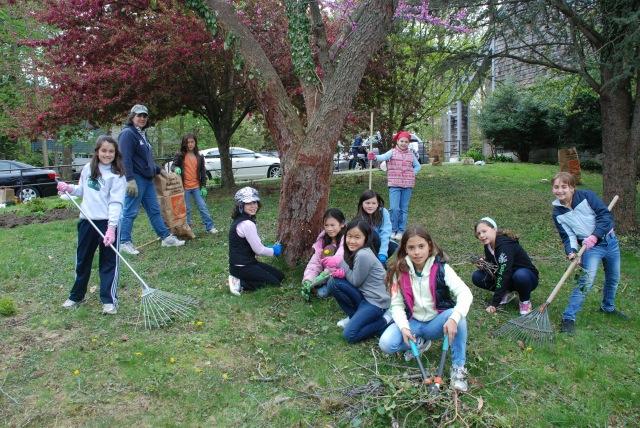 Without parents to become leaders there would be no scout troops. There are girls right now in our elementary schools asking to be part of a troop but we need parents to come forward to lead them. Please think about becoming a troop leader at your elementary school. It’s really an incredibly rewarding experience for everyone involved. I know that my daughter’s life would be very different had she not been in our troop. Miriam and I wouldn’t have the many memories we now share or the light in our eyes as we watch our daughters learning to become accomplished young women.
Without parents to become leaders there would be no scout troops. There are girls right now in our elementary schools asking to be part of a troop but we need parents to come forward to lead them. Please think about becoming a troop leader at your elementary school. It’s really an incredibly rewarding experience for everyone involved. I know that my daughter’s life would be very different had she not been in our troop. Miriam and I wouldn’t have the many memories we now share or the light in our eyes as we watch our daughters learning to become accomplished young women.
This article was submitted by Lisa Furgatch. (Lisa is a co-leader of a girl scout troop currently in seventh grade at Scarsdale Middle School) If you are interested in learning more about becoming a leader, please contact Carmela Crawford or Miriam Beveridge at Scarsdale/Edgemont Girl Scouts at [email protected] or click here to visit their website.
$145.2MM Budget Proposed for Scarsdale Schools for 2013-14
- Details
- Hits: 7957
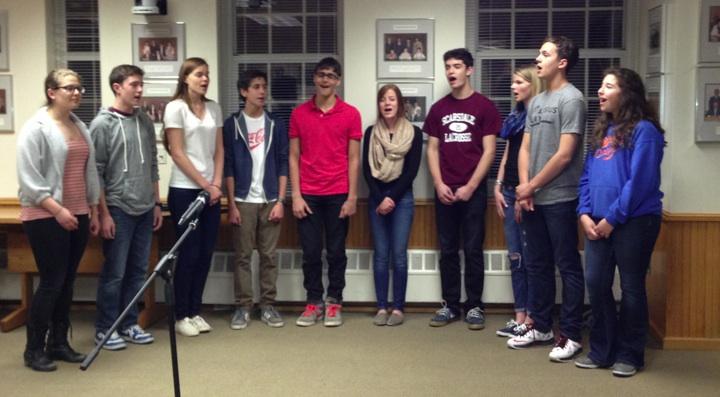 The Scarsdale School Board ended a controversial budget season on April 22 with the adoption of a budget of $145,286,213 for school year 2013-14 that represents a 2.47% increase over the 2012-13 budget and will increase taxes by 3.91% for Scarsdale residents and 4.01% for those in the Mamaroneck strip. The proposed budget is almost $1 million below the preliminary proposed budget that was distributed to the community in early March.
The Scarsdale School Board ended a controversial budget season on April 22 with the adoption of a budget of $145,286,213 for school year 2013-14 that represents a 2.47% increase over the 2012-13 budget and will increase taxes by 3.91% for Scarsdale residents and 4.01% for those in the Mamaroneck strip. The proposed budget is almost $1 million below the preliminary proposed budget that was distributed to the community in early March.
This is the second lowest budget-to-budget increase in 20 years and as Board member Jonathan Lewis said, "it is an extraordinary effort at belt tightening in the fifth year of a financial crisis."
The 2013-14 school budget includes funds for a new health, fitness and learning center, maintains low class sizes, adds security personnel to district schools, and adds a teacher and replaces a retiring librarian at the high school. By liquidating building repair reserves, reducing funds for pension contributions, decreasing funds held aside for tax disputes and deferring the purchase of a new school bus, the Board was able to move ahead with the new project and deliver a tax increase below 4%. However, since the budget exceeds the NYS state cap by $600,000 it will need to pass by a 60% vote.
At the previous meeting on April 15 the projected tax increase was just over 4% and the Board asked the administration to recommend $300,000 in additional budget cuts so that the tax increase could begin with "a three rather than a four." In order to bring the tax increase below 4% the Board did move to make $300,000 in additional cuts at the end of the 4-22 meeting.
Here are where the funds that were cut:
- A new school bus: $100,000
- Funding for a computer consultant: -$25,000
- Tax certiorari funds: $100,000
- Program Improvement Funds: $10,000
- Arts Initiatives: $10,000
- Center for Innovation: $10,000
- Principals' allocation for discretionary repairs: $25,000
- Travel budget: $5,000
For the first time in recent history, the budget did not receive unanimous approval from the PT Council, the League of Women Voters or even the Scarsdale High School PTA. Concerns about the expense and potential usage of the proposed "Wellness Center" divided the community as well as the board who ultimately passed on the project with a vote of 5 - 2. However, the PT Council does plan to issue a statement. According to PT Council President Gayle Hutcher, "The PT Council does not follow any specific timeline for commenting on matters such as the School Budget. We feel it is important to take time to research the details and then convene a meeting of our executive board to discuss. Any silence on our behalf does not imply a message of pro or con. We have used the budget study process as a time to listen, ask questions and comment on the budget. We have spoken at two recent Board meetings on the budget. That is the point of these meetings. With the last details of the budget approved late on Monday, the PTC will now meet to form a statement. I would hope to speak on this topic at the next BOE meeting on May 7th."
It appears that five years of economic difficulties, astronomic increases in pension and retirement costs and the newly imposed tax cap are taking their toll on the district and challenging the ability of the administration and the board to reach consensus.
The meeting began on a high note, with a performance by SHS A Capella group "For Good Measure," who moved like Jagger" and did a terrific rendition of Rianna's "Distrubia". Catch their act on Cable TV.
On the agenda was a resolution to release $425,000 in repair reserves to free up funds for repairs at district schools and in turn, monies for the Wellness Center, now temporarily dubbed the Center for Health, Fitness and Learning. The money will be used for $365,000 in roof repairs and for asbestos abatement in the middle school kitchen and in high school floors.
In the community comments portion, Gayle Hutcher spoke for the PT Council and objected to the additional $300,000 in cuts to bring the tax increase below 4%. Here are her comments:
"The Board's desire to cut an additional $300,000.00 of the school budget in order to bring it below 4% could lead to sacrificing program/capital investment without thinking of long-term (even next year) implications. Is this cost worth it? We feel the savings may not be worth it when compared to what we could lose. We may be delaying important items that will need to be addressed in the future and could compound to increased costs. We have already made some hard decisions this year that have affected our programs and curriculum."
However Robert Berg of Tisdale Road saw it another way and used strong language to urge the Board to comply with the state tax cap. He said, "We don't need no stinking tax cap ... , that seems to be the motto of the Administration and the School Board this year. ... The Journal News reports that only four school districts out of 53 in the Lower Hudson Valley are planning to surpass their tax caps for 2013-2014. Is it any surprise to Scarsdale taxpayers that Scarsdale is one of the four? ... throughout the Great Recession – for the period 2008-2014, Scarsdale's school tax levy will have increased 10.34%, while Briarcliff Manor's school tax levy has plunged by 10.26%" "I cannot support this budget. I urge my fellow taxpayers to defeat the proposed budget, and demand that the Board present another budget that falls within the tax cap."
Vivienne Braun asked the administration to provide details about the curriculum for the new Wellness Center, saying, "I would love to know what will go on there before we build it –- what is going to happen there that is not already happening in health classes?" McGill contended that the "plan begins with a vision," and that it was "not necessary to know a fine level of detail to move forward."
After a hiatus from school board meetings when he "was tied up at Village Hall," Bob Harrison was back in the room. He took the mike to lobby the Board to increase funds for the Scarsdale Teen Center, which in recent years, was cut from $87,500 to $65,000.(The board did not increase the allocation.) He also objected to the new Wellness Center. Harrison sparred with Board President Liz Guggenheimer for the floor when he went beyond his allotted three minutes and refused to yield the mike. When he finally took his seat, Guggenheimer said, "I missed you Bob."
As the meeting came to a close, Art Rublin, Chair of the Coalitions for Scarsdale Schools said, "the Board has developed a proposed Budget that is very responsive to the community's demonstrated interest in program, instruction and facilities that are important for a well-rounded high-quality public education, with year-over-year budget growth that is very low from an historical perspective despite significant state-mandated pension contribution increases." "I would say, having watched the Board work hard over many hours, that you have done that, balancing fiscal prudence with sustaining a school district that we are all proud of and that many people depend on."
The Board announced that they will hold two community budget forums to answer questions about the proposed 2013-14 budget.
Here are the details:
Wednesday, April 24th at 7:30 p.m. in Room 170-172 at Scarsdale High School (Brewster Road side of the school in the Board of Education wing)
Thursday, May 2nd, at 10:30 a.m. in Room 170 at Scarsdale High School (Brewster Road side of the school in the Board of Education wing).
Representatives from the Administration and the Board of Education invite community members to pose questions and air concerns about the proposed budget.
The school budget vote and election of new school board members will take place on Tuesday May 21 from 7 am to 9 pm at the Scarsdale Middle School Gym.
State Pensions Guaranteed by NYS Constitution: Clarification from State Assemblywoman Amy Paulin
- Details
- Hits: 4844
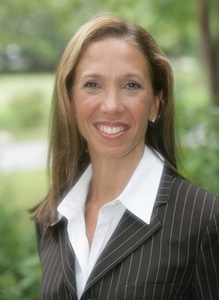 Here is a letter from Assemblywoman Amy Paulin with details about the Retirement agreements for NYS employees: I've confirmed with the Thomas Nitido, the Deputy Comptroller for the New York State and Local Retirement System, that it would be unconstitutional for the Legislature to reinstate the 3% employee pension contribution for Tiers 3 & 4 following completion of 10 years of service. The benefits provided are constitutionally protected and cannot be diminished retroactively by the Legislature or by the courts. My understanding is that even if local officials were able to negotiate obtaining some additional contribution by employees, there would be no mechanism by which such additional contributions could be paid into the State retirement system (the retirement system legally cannot accept employee contributions after 10 years of service). While it is possible that an employer might be able to negotiate obtaining contributions from its employees, i.e. in the form of a wage reduction, to help the employer pay its pension costs, it is difficult to imagine how that would in fact occur. (For example, the pension benefit is a constitutionally protected right of the individual employee yet the additional employee contribution/wage reduction would be negotiated by the collective.) If such an agreement were challenged in court, it is possible that the courts would view this as an end-run around the unconstitutional diminution of the employee's benefits.
Here is a letter from Assemblywoman Amy Paulin with details about the Retirement agreements for NYS employees: I've confirmed with the Thomas Nitido, the Deputy Comptroller for the New York State and Local Retirement System, that it would be unconstitutional for the Legislature to reinstate the 3% employee pension contribution for Tiers 3 & 4 following completion of 10 years of service. The benefits provided are constitutionally protected and cannot be diminished retroactively by the Legislature or by the courts. My understanding is that even if local officials were able to negotiate obtaining some additional contribution by employees, there would be no mechanism by which such additional contributions could be paid into the State retirement system (the retirement system legally cannot accept employee contributions after 10 years of service). While it is possible that an employer might be able to negotiate obtaining contributions from its employees, i.e. in the form of a wage reduction, to help the employer pay its pension costs, it is difficult to imagine how that would in fact occur. (For example, the pension benefit is a constitutionally protected right of the individual employee yet the additional employee contribution/wage reduction would be negotiated by the collective.) If such an agreement were challenged in court, it is possible that the courts would view this as an end-run around the unconstitutional diminution of the employee's benefits.
Note that I understand you may have learned that years ago the State Comptroller unilaterally eliminated the mandatory employee contribution after 10 years of service. To clarify, in 2000, the Governor signed into law legislation that, among other things, required employees enrolled in Tiers 3 & 4 to make 3% contributions until the member accrued 10 years of service. (When those Tiers were first established, employees had been required to make such contributions for the duration of service.) I understand the State Comptroller advocated for the changed but he could not, and did not, effectuate the change in the law nor could the Comptroller do so now.
I have been very sensitive to the fiscal pressure on local governments and school districts resulting from the onerous increases in pension costs, and continue to advocate for mandate relief and to look for other ways to reform the system to ease the burden on local governments and school districts. In the last 3 years alone, the Legislature has established two new Tiers, Tier V and Tier VI, requiring, among other things, increased employee contributions for the duration of service, limits on benefits paid and limits on the amount of overtime included in wages for purposes of calculating benefits. (It had been almost 30 years since the last Tier (Tier IV) had been established.)
In an effort to reform the system, I am currently a co-sponsor on 3 bills:
· This bill requires the State to pay pension costs in excess of an up to 2% increase in pension costs to municipalities and schools (no bill number yet).
· A. 5105. This bill freezes the current retirement tier of all elected officials and non-civil service appointed employees in New York State, and creates a new defined contribution plan for all elected officials and non-civil service appointees in New York State.
· A.5206. This bill creates a defined contribution plan for employees hired on or after April 1, 2012. This plan would be optional for all employees, with the exception that newly elected officials would be deemed mandatory member.
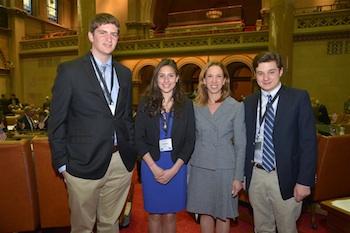
Governor Cuomo: Fiscal Hero or Grandstander?
- Details
- Written by: Joanne Wallenstein
- Hits: 4407
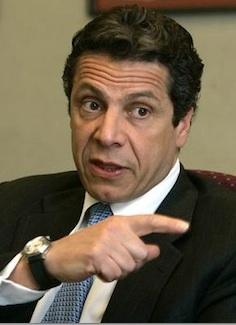 It's been a wrenching budget season for both the Scarsdale Schools and Village – with administrators making painful decisions about what to cut ... and risking public censure if they dare to propose adding enhancements that will further increase the budget.
It's been a wrenching budget season for both the Scarsdale Schools and Village – with administrators making painful decisions about what to cut ... and risking public censure if they dare to propose adding enhancements that will further increase the budget.
Our leadership has been backed into a corner, trying to continue to provide the first rate education that brought most of us to Scarsdale as well as the excellent municipal services that we used to take for granted but now hold dear. Could it really come to pass that we will no longer have our garbage picked up? Will we now pay for water as well as a sewer fee for what's flushed out? Will there continue to be fireworks on the fourth of July? At school we're praying that our kids are not the ones to end up in the oversubscribed classes or find themselves eating lunch on the floor due to overcrowding in the cafeteria.
Residents are pointing fingers at administrators, board members, managers and each other. As Village Manager Al Gatta said, "everyone wants everything and no one wants to pay for it."
Sitting through these disturbing public budget forums I realized that we should stop putting the blame on our leaders in Scarsdale and direct it north to Albany where the blame is due.
Last year, our Governor won kudos when he passed a 2% tax cap, promising to bring relief to taxpayers. To some Westchester County residents, who have the honor of paying the highest taxes in the country, this was welcome news. They hoped that the village, the schools and the county would tighten their belts and pass the savings along to residents.
And they have tightened their belts, and squeezed the skin underneath.
In fact, the only group that failed to trim their costs was New York State, the same legislators who passed the tax cap. Rather than cut back on their budgets, they mandated wild increases in pension and retirement costs for municipal employees, and school personnel making a 2% tax increase laughable. Cuomo promised pension reform but failed to deliver. The state is requiring municipalities and school districts to make up for investment losses in the pension fund, asking for increases that far outstripped the 2% cap. In addition, Cuomo failed to negotiate with the unions to ask for increased employee contributions to the fund and for defined contribution plans rather than a defined benefit plans that guarantees employees a set payout despite the ups and downs of the market.
Cuomo has failed to take the unions on and passed the buck to local administrators and managers to make them look like inefficient spendthrifts.
How big are these increases in pension and retirement fund contributions? In both the Scarsdale Village and Scarsdale School budgets, these increases assume the lion's share of budget growth:
In the budget for the Scarsdale Schools, payment for the Teacher's Retirement Fund is estimated to go from $7,418,899 in 2012-13 to $12,173,493 in 2013-14, an increase of 64.09%. The Employee's Retirement contribution will leap from $2,538,377 to $4,013,220 or 58.10%. These increases account for 80% of the projected growth in the proposed $146,000,000 school budget.
At the Village, in the last four years from 2010-2011 to 2013-2014, the Village pension contribution has grown from $2,219,916 to a projected $4,827,665 for 2013-2014, or an astronomical 117.5%
In March 2012 the state did pass regulations for new employees that require them to contribute from 3% - 6% of their salary to their retirement fund and increased the retirement age from 62 to 63. It also reduced retirement benefits for those retiring before age 63. However, this did nothing to change the pension contributions for current employees so it will be decades before this new legislation has a significant impact.
We ask Assistant School Superintendent Linda Purvis if teachers and staff contribute to their pensions and here is her explanation:
"Some teachers and staff contribute; the majority do not. It depends on when you joined the systems. If you have less than 10 years of membership in the two retirement systems (teachers and employees) and are in Tiers III and IV (the largest tier) then you contribute 3% of your salary. Once your 10-year membership anniversary occurs (i.e., you joined September 1, 1998, and it is now September 1, 2008) you stop contributing. (A very generous gift from Governor Pataki and the NYS Legislature, as the original requirements of Tiers 3 and 4 were that the 3% contribution continued for the duration of employment.).) People hired before 1975 have never contributed anything towards the pensions, but those employees are mostly retired at this point. Recent hires may be members of the new tiers (5 and 6) and they contribute up to 6% of their pay (sliding scale) and have less generous pensions.
We also asked Scarsdale Village Manager Al Gatta whether the Governor has the power to force the unions to change the terms of their pension agreements to require current employees to contribute to their pensions. He said, "The question is whether it can be negotiated. When the 3% employee contribution was eliminated it was done by the Comptroller unilaterally and many people including myself were surprised because there was no reason for it. Thus the theory with some people, including me, is that the Comptroller can reinstitute it. Others believe that once the 3% relief was granted it has now become a constitutional issue as to whether it can be taken away."
In addition the state offers a defined benefit plan that guarantees a specific payout at to retirees despite the ups and downs of the market. Most private employers offer a defined contribution plan where the employee directs their investments in their retirement fund and benefits vary depending on the market.
We asked Purvis for her take on what could be done to solve the problem and here is what she said:
"I believe that in an ideal world every employee who belongs to these systems should contribute from their paycheck, as these plans provide a rich benefit. (Membership in the systems is mandatory for full-time employees.) Discontinuing the 3% contribution for Tiers 3 and 4 after 10 years was irresponsible, to say the least. It left employers shouldering the full impact of cyclical fluctuations in the financial markets. Ideally that contribution would be reinstated. Even better would be contributions that were adjusted annually just as employer contributions are. Currently I don't think that is possible under state law, but it's what makes sense.
Recent hires (Tier 6) as noted above contribute more, and have less generous pensions. The impact of this change will ultimately be substantial, but won't be felt by employers for a while.
Defined contribution plans are a popular idea and they would certainly stabilize employer costs. But I am very concerned at the idea of allowing employees who may know nothing about investments to manage what will be, at the end of their working years, a sizable amount of money that they will live on for the rest of their lives. Wall Street will sell them products of dubious value and/or charge them substantial fees to manage their funds. (We already see that happen with 403b plans and our employees.) So these plans can make employees vulnerable. A defined contribution option was added to Tier VI for higher-salaried employees, but it is not mandatory.
I think the key to managing the defined benefit plans is not to discontinue them but to share the pain more equitably between employers and employees. Individual school districts cannot change the way the plans work - we are charged based on a statewide rate - but that is something that should be taken up at the state level."
This year the 2013 state budget included no pension reform. When asked about the issue on March 8, 2013, Cuomo's response was nonsensical. He said, ""By definition, the unions don't want a reform that would diminish pension benefits, so the answer's always going to be, 'No.'"
Is Cuomo shying away from taking on the unions as it risks his political future or does he really have no more chips to trade with the unions?
In my view, rather than pressure our local officials to make even deeper cuts to our local budgets, let's put the pressure on Governor Cuomo. He owes it to the taxpayers to take on the unions and break this impasse. It's time for Cuomo to trade in some of his chips rather than put our local municipalities and schools in jeopardy.
Bob Steves Sworn In as 52nd Mayor of Scarsdale
- Details
- Hits: 3739
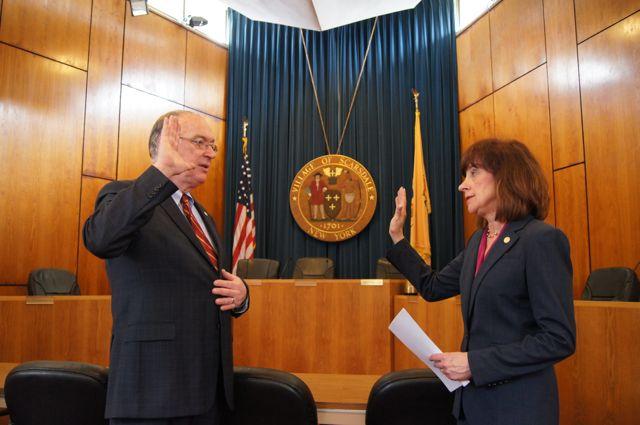 Vowing to make Scarsdale a better place to live, Bob Steves was sworn in as the 52nd Mayor of Scarsdale at Scarsdale Village Hall on Monday afternoon April 1. In a very brief statement, Steves said he was "energized and encouraged by everyone who volunteers" and said, "what we do individually and collectively makes Scarsdale a better place to live."
Vowing to make Scarsdale a better place to live, Bob Steves was sworn in as the 52nd Mayor of Scarsdale at Scarsdale Village Hall on Monday afternoon April 1. In a very brief statement, Steves said he was "energized and encouraged by everyone who volunteers" and said, "what we do individually and collectively makes Scarsdale a better place to live."
Thomas Martin was also sworn in to a first term as Village Trustee by Village Clerk Donna Conkling. Trustee William Stern and Trustee Stacey Brodsky were out of town and will be sworn in privately at Village Hall.